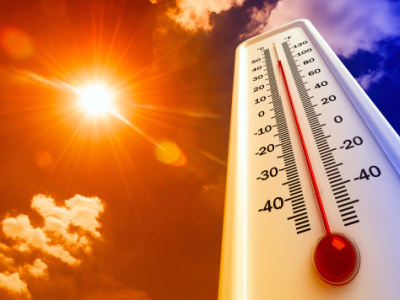As summer heats up, employers in the Southwest should keep a close eye on how heat affects their workforce. Heat-related illness is a hot topic for the federal Occupational Safety and Health Administration (OSHA) as well as state OSHA plans.
Recently, an unusual settlement involved the Department of Labor (DOL) and OSHA over several heat injury and illness matters. As a result of the settlement, the U.S. Postal Service (USPS) agreed to spend millions of dollars on a new fleet of mail carrier vehicles equipped with air conditioners. The interesting circumstance of the federal government punishing itself for not maintaining proper heat protections for employees is likely an indication of things to come for employers across the nation.
OSHA Inspections Heat Up
Heat illness and related issues have become an enforcement priority for OSHA. On April 12, 2022, the agency published a national emphasis program (NEP) regarding heat-related injury and illness. Such an NEP requires field OSHA inspectors to conduct inspections of employers that are considered high risk for heat illness and to pay close attention to heat illness issues during any inspection.
The NEP remains in place for 2023, and as the calendar turns to summer, OSHA will once again be ramping up workplace heat inspections. As a part of the NEP and its enhanced heat-related inspections, OSHA will issue citations alleging a violation of the “general duty clause.” This statute requires employers to furnish their employees a workplace that is “free from recognized hazards that are causing or are likely to cause death or serious physical harm.” As a result of the NEP, OSHA has informed employers that outdoor heat is a recognized hazard.
State OSHAs Sweating the Heat
In addition to the federal OSHA action, several state OSHA plans—including California, Minnesota, and Washington—have begun to enforce their own heat illness regulations. Moreover, Nevada OSHA announced its plan to enact its own heat illness statute.
Generally, state statutes or regulations require employers to create a heat illness prevention program (HIPP) to prevent workplace heat injuries. For example, the California OSHA regulation requires employers to provide cool, potable water for employees, provide “cooldown time,” and implement special heat acclimatization rules for new hires.
California has gone a step further, requiring OSHA inspectors to examine worksites to ensure employers have trained employees on heat issues, humidity levels, radiant heat sources, and even the amount of air moving through the workplace. California OSHA inspectors will document the conditions when issuing citations.
Indoor as Well as Outdoor
Both California and Nevada are taking steps to regulate indoor heat-related issues as well as outdoor heat. The possibly new indoor heat regulations will create difficulties for a variety of employers, particularly in forging, metalworking, warehouses, and other similar industries, who must pit air conditioning against the heat put off from a kiln or molten metal.
Following in the footsteps of some state plan states, the federal OSHA published advanced notice of proposed rulemaking in 2021 for a heat regulation that will cover the indoor and outdoor workplaces of all employers nationwide. The comment period for this possible new regulation has closed.
The proposed OSHA regulation will likely not be in effect until 2024. You should expect the new regulation to be similar to the existing regulations in states currently enforcing workplace heat safety.
Steps to Prepare for the Heat
Since most of the heat illness regulations are triggered when the outdoor temperature hits 80⁰ F, you should be prepared for such temperatures and possible OSHA inspections and citations. Consider how the potential new statutes, regulations, or guidelines affect your businesses. You may wish to take proactive measures to address heat-related issues and recognize that heat in the workplace—either outside or indoors—can be a health hazard.
Consider implementing a written heat illness prevention policy that addresses the signs and symptoms of heat illness, how to prevent it, the importance of providing access to cool water and shade, and how to react to a heat illness situation. Even if you opt not to implement a written heat illness policy, you must provide heat illness safety training to employees working in hot conditions, and you should instruct your line-level managers to monitor employees for heat-related issues.
Taking proactive measures to cost-effectively mitigate heat-related illness and injury is essential to avoid workplace-related heat injuries and is key to navigating the present and forthcoming heat regulations.
Tyler V. Thomas is an attorney with Snell & Wilmer LLP in Phoenix. You can reach him at tvthomas@swlaw.com.

